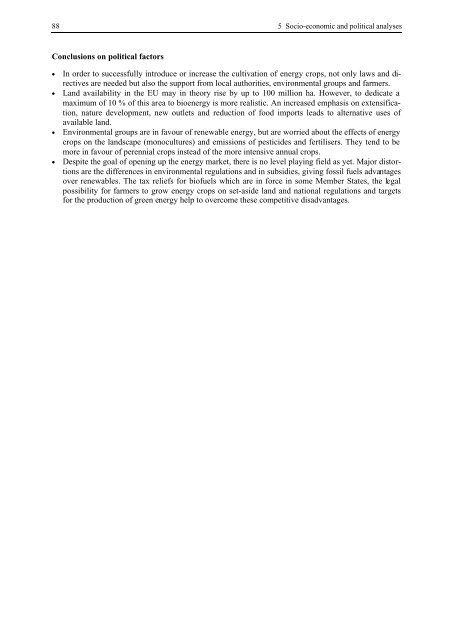BIOENERGY FOR EUROPE: WHICH ONES FIT BEST?
BIOENERGY FOR EUROPE: WHICH ONES FIT BEST?
BIOENERGY FOR EUROPE: WHICH ONES FIT BEST?
You also want an ePaper? Increase the reach of your titles
YUMPU automatically turns print PDFs into web optimized ePapers that Google loves.
88 5 Socio-economic and political analyses<br />
Conclusions on political factors<br />
• In order to successfully introduce or increase the cultivation of energy crops, not only laws and directives<br />
are needed but also the support from local authorities, environmental groups and farmers.<br />
• Land availability in the EU may in theory rise by up to 100 million ha. However, to dedicate a<br />
maximum of 10 % of this area to bioenergy is more realistic. An increased emphasis on extensification,<br />
nature development, new outlets and reduction of food imports leads to alternative uses of<br />
available land.<br />
• Environmental groups are in favour of renewable energy, but are worried about the effects of energy<br />
crops on the landscape (monocultures) and emissions of pesticides and fertilisers. They tend to be<br />
more in favour of perennial crops instead of the more intensive annual crops.<br />
• Despite the goal of opening up the energy market, there is no level playing field as yet. Major distortions<br />
are the differences in environmental regulations and in subsidies, giving fossil fuels advantages<br />
over renewables. The tax reliefs for biofuels which are in force in some Member States, the legal<br />
possibility for farmers to grow energy crops on set-aside land and national regulations and targets<br />
for the production of green energy help to overcome these competitive disadvantages.

















